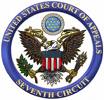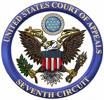Seventh Circuit Week in Review, Part II: Challenging the Validity of a Jury Waiver, and Much More
 This continues my review of the Seventh Circuit’s new opinions in criminal cases, which I began here. Of the remaining cases, only two merit extended discussion.
This continues my review of the Seventh Circuit’s new opinions in criminal cases, which I began here. Of the remaining cases, only two merit extended discussion.
In United States v. Williams (No. 07-3004), the court dealt with a challenge to the validity of a jury waiver. Before proceeding to a bench trial, Williams orally waived his right to a jury trial in open court. He did not, however, provide a written waiver, as required by Fed. R. Crim. P. 23(a). Nor did the judge engage in the colloquy recommended for jury waivers by United States v. Delgado, 635 F.2d 889 (7th Cir. 1981). On appeal, the defendant argued that these procedural errors rendered his waiver invalid.
The Seventh Circuit (per Judge Rovner) nonetheless affirmed.

